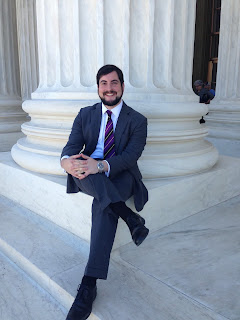If you have been on a remote island without access to the internet, you might not be aware that the U.S. Supreme Court is very much in the news today. Justice Anthony Kennedy, who will turn 82 in July, has tendered his resignation. Since his appointment by President Reagan in 1987 (he actually took his seat on the Court in early 1988), Justice Kennedy has often served as the "swing vote" on many important cases. His replacement will be appointed by the President and must be confirmed by the Senate. It can be expected that Justice Kennedy's replacement will be more conservative than he has been. Since Supreme Court justices have lifetime tenure (unless they resign, as happened here), Justice Kennedy's replacement can be expected to have an impact on our laws for many years to come.
Whatever your views of the Supreme Court or its future, you might want to take advantage of some excellent materials geared for kids to discuss these current events with your school-aged children.
A real-life story of a current Supreme Court Justice, geared for four through eight year olds (although this adult enjoyed it greatly), is I Dissent: Ruth Bader Ginsburg Makes Her Mark by Debbie Levy. With lively illustrations to help children access the story, this explanation of how Justice Ginsburg broke down gender barriers throughout her life is a satisfying read. [Adults who enjoy I Dissent might want to read Notorious RBG: The Life and Times of Ruth Bader Ginsburg.]
A whimsical tale for elementary students, with guides for parents and teachers included, is
Marshall, the Courthouse Mouse: A Tail of the U. S. Supreme Court, by Peter W. Barnes.
Finally, Channel Thirteen, a PBS station, has a list of resources about the Supreme Court for children and for young adults and teens. Unfortunately, the links in this list are no longer live, but a search engine can help locate these helpful books.







